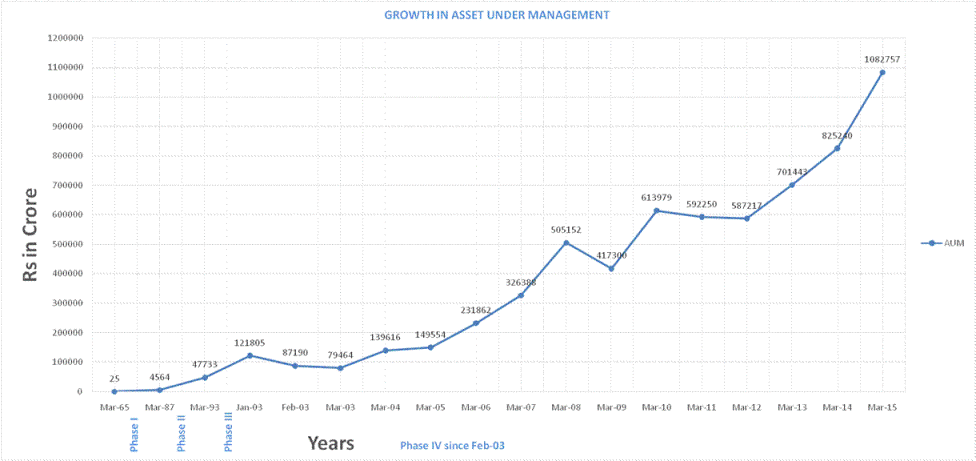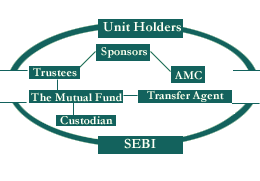India's population is growing at alarming rate. The significance of the population-growth can be judged from the fact that during the decade 1981- 91, there has been an increase of 162.97 million. By May 2000 India's population has already reached 1000 million (1027 million in 2001).
While the global population has increased only three fold during the last century, from 2 billion to 6 billion, India's population has increased nearly five times from 238 million to one billion in the same period. Its current annual increase (15,5 million) is large enough to neutralise any efforts to conserve the resource endowment and environment and may soon make it the most populous country of the world, overtaking China by 2045. Hence, it is an urgent need of the hour to formulate and implement a positive population policy to curb this rapid growth of population and ensure better quality of life to the people.
Although India was the first developing country to adopt a positive population policy in 1951-52 'to stabilise population at a level the national economy could absorb', yet its achievements in controlling its numbers have been far from satisfactory. Our annual rate of population growth, which was around 1.3 per cent during the three decades preceding Independence, was at its peak (2.25 percent) during 1961-71. The latest estimates, however, indicate some downward trend (1.95 per cent during 1991 -2001). In the following lines a brief review of our population policy since the beginning of the planning era has been attempted.
The First Five Year Plan (1951-56) enunciated that the programme for family limitation and population control should: (a) present an accurate picture of the factors contributing to the rapid population increase in India, (b) discover suitable techniques of family planning and devise methods by which knowledge of these techniques could be widely disseminated, and (c) give advice on family planning as an integral part of the service of government hospitals and public agencies.
The focus in the beginning remained on promoting the safe period method and a gradual popularisation of mechanical and chemical contraceptives.
The population policy of the First Plan continued unaltered during the Second Plan (1956-61) except that the voluntary sterilization scheme was introduced in 1956. Due to unexpected high population growth rate in 1961 Census the 'clinical approach' of the population policy was replaced by an 'extension education approach' during the Third Plan. Thus, creation of social climate in favour of small family norms, provision of readily accessible services, adoption of effective family planning methods by all eligible couples (about 90 million), stimulating such social changes as increasing marriage age, education and employment of women, accuser overall economic development, and continues research and evaluation, became the guide principles of population policy of this plan.
The population policy became more posit during the Fourth Five Year Plan (1969-74) whim considered family planning as 'the kingpins of plan' and small family as 'an essential and inseam able ingredient of development'. The Plan also up a time-bound target of reducing the birth rate from 39 per thousand to 23 per thousand by 1978-79 An organisational set up from central to peripheral level was established as a part of the existing medical and health services to reach each couple in reproductive age-group all over the country. The outlay of the plan was fixed at Rs. 286 crore (111 times of the expenditure of the previous plan) which] achieved the target of the sterilisation of about 6l million couples, averting about 6.9 million births.
The Fifth Five Year Plan (1974-79) increased| the outlay to Rs. 500 crore for family planning programmes. It introduced basic change in the population policy by integrating family planning services with welfare services covered under the minimum needs programme.
The programme sought to integrate most of the basic social services like education and public health services with family' planning and nutrition for children, expectant and nursing mothers. Similarly the introduction of the element of compulsion, monetary incentives and penalties, and legislation of abortions during the plan added new dimension to the population policy of the country.
During the Sixth Five Year Plan (1980-85) the family welfare continued to be accorded a high priority. The plan adopted strategy to integrate health, family welfare and nutrition services at all levels. Enhanced cash compensation for voluntary sterilisation and full rebate in income tax for specified donations for welfare purposes were some of the incentives popularised during the plan. The plan targeted 36 per cent of the couples of the country in the reproductive age group to bring down the birth rate to 30 per thousand by the end of the plan.
The population policy during the Seventh Plan (1985-90) took a significant turn to make family planning programme more effective. Its major objectives included: (a) increasing the mean age at marriage for females to over 20 years, (b) promoting 'two-child family' norm, (c) protecting over 42 per cent eligible couples by way of variety of contraceptives, (d) enhancing child survival rate by reducing the infant mortality rate to 90 per thousand live births through universal immunization of infants and of prospecting mothers, (e) bringing down the crude birth rate to 29. 1 per thousand and the crude death rate to 10.4 per thousand, (f) generating environment for fertility decline through relevant socioeconomic interventions, (g) promoting female literacy and employment programmes, and (h) providing population education to all children in 11-15 age group and also to those out of educational institutions through Adult Education and Non-formal Education programmes. All this was to be achieved by effectively involving the people in general.
The Plan stipulated a target of 31 million sterilisations, 21.25 million IUD insertions and 14.5 million CC users. It also advanced the target of achieving a net reproduction rate of 1 from 2000 to the period of 2006-2011. The Eighth Plan fixed up the target to achieve the crude birth rate of 26 per thousand, infant mortality rate to 70 per 1000 live births and the couple protection rate to 56 per cent.
The plan initiated an Action Programme with main features of : (i) improving the quality and out-reach of family welfare services in the field, (ii) introducing new package of compensation/incentives giving more flexibility to State governments, (iii) initiating innovative programmes in urban slums for propagating family welfare activities, (iv) adopting a differential strategy for focusing attention on 90 districts of the country where the crude birth rate is above 39 per 1000, (v) increasing the involvement of voluntary agencies and non-governmental organisations in family welfare programmes, (vi) linking the rural development and poverty alleviation grants to districts and panchayats on the basis of their performance in the control of birth rate, and (vii) reducing the strong son preference in many parts of the country. The Eighth Plan again advanced the Net Reproduction Rate of unity to the period of 2011-16 A.D.
New Population Policy, 2000
The New Population Policy was announced in 2000. It has special focus on health and education and envisages the target of stable population by 2045 A.D. (instead of 2016 A.D.).
The policy includes freezing of Lok Sabha seats at current level of 543 till 2026, compulsory registration of marriage and pregnancy, along with birth and death, cash incentives for compliance with requirements regarding antenatal checkup, institutional delivery by a trained birth attendant, increasing the number of health workers, improve the availability of contraceptives and strengthening the health and family welfare services.
The medium term objectives of the policy include bringing down the total fertility rate to replacement level by 2010 through vigorous implementation of intersect oral operational strategies like free school education to children up to the age-group of 14, 20 per cent reduction in the drop outs of children in schools at primary and secondary levels, bring down the child mortality rate to the level of 30 per 1000, universal immunization for communicable diseases, contain the spread of AIDS, and fix the minimum marriage age limit of 18 years for girls.
Under the policy the Government of India has offered an incentive package to model small families. It includes improvement in the facilities for safe abortion, prize to village panchayats and district boards fulfilling the target of model small families in respect of reducing infant mortality rate and improving literacy, an incentive of Rs. 500 for the upbringing of female children up to the limit of two, an incentive of Rs. 500 to the couple aged 19 years on the birth of first child to the birth of second child, insurance up to Rs. 5,000 for the couple below the poverty line who has two living children, incentive to the couple marrying after the fixed age, producing first child after 21 years of age and adopting permanent family planning measures after the birth of second child.
The population policy has been severely criticised on many grounds. Eminent demographer Ashish Bose considers these incentives futile and non-effective. Dr. Puri questions about the source of money for these incentives. Dr. P.P. Talwar, demographer, came out strongly on the Government pushing the stability targets from year 2016 to year 2045." This shows that policy-makers have not applied their minds to the implications of postponing the targets by 35 years," Dr. Talwar said.
He was also critical of the population commission being chaired by the Prime Minister on the grounds that he would never have sufficient time to devote to such crucial area. Dr. Nina Puri, President Family Planning Association of India, felt that the policy was soft on the male participation.
The new policy, she felt, dilutes the one pronged issue of sterilisation while couching so many things like education, gender concerns, immunisation, AIDS, etc. Is the Government serious about overall development and will it be able to weave these issues as a coherent whole? The policy even did not take contingence of the suggestions made by the Swaminathan Committee which suggested for the formation of a Population and Social Development Commission. The granting of incentive package to selected few is another major defect of the policy.
Infect our population policy has been over emphasising the role of positive measures (such as contraception, sterilisation, abortion, etc) to control population growth without paying adequate attention to the dynamic interaction between the demographic structure and the economic and social development and implications of such interaction for limiting the rate of population growth. For instance, the steadily dwindling sex ratio, the higher incidence of female mortality at specific ages, the education for girls at primary and secondary stages, the informal and formal instructions for young women in vocation, the opportunities for females to work, the population education etc have attracted least attention of our planners and policy makers.
The population policy of a nation can no longer confine itself to the reduction of birth rate alone, instead it must be all comprehensive strategy for overall improvement of social, economic and demographic fabric of a nation.
There are two district approaches to the family welfare/planning programmes. One advocating long term measures with a view to improving overall social, economic and demographic structure of a country and two, short-term measures with a view to reaping immediate results by way of averting the number of births.
The long term measures include well conceived population education, increasing the marriage-age, preventing child labour, compulsory education and adult literacy campaigns, restrain the maternity benefits to small families, proved old age security, introduction of new life insulin policies carrying special benefits for those small families, developing intense network of scale industries based upon agro-livestock raw material and utilising scheduled castes and schedule tribes manpower, diversifying our economy by of rapid urban industrial development, and beta health, education and employment facilities partialarly for females. The long range approach reconises that the fertility behavior is a complex pi nominal and has to be dealt within the context overall socio-economic structure of a society.
On the other hand short-term measures it eludes temporary and permanent methods of peeving child birth such as contraception, voluntary compulsory sterilisation, abortion after the birth second/third child in the family and social and economic benefits/penalties for small/large family respectively. All such measures need people's approval and participation. A list of all such variables which have negative effect on fertility be prepared and the population policy is formulated in the light of these, keeping that variable on the top in whose case the correlation is the strongest and whose contribution in the declining fertility is the largest.
The most crucial question in our population policy is about the element of compulsion. The gravity of the situation in India suggests that there can be no escape from compulsion. The Government should come out with legislative measures avoiding any discrimination on the ground of sex, caste and creed. Along with modern methods, the traditional methods of family planning should also be popularised to attract more acceptance in rural folk.




